For additional information relating to this article, please contact:
December 01, 2020COMPENSATION OF EMPLOYEES Q3 2020 Nova Scotia’s seasonally adjusted employee compensation (wages+salaries+employer social contributions) increased 4.6% in the third quarter of 2020 to $6.15 billion. Employee compensation in third quarter was down 0.1% in Nova Scotia when compared to the third quarter of 2019.
The wages and salaries portion of employee compensation increased 4.6% to $5.29 billion in the third quarter. On a year-over-year basis, wages and salaries were down 0.3% in the third quarter. Nova Scotia’s wages and salaries reported year-over-year declines in the first two months of Q3 2020. However, the strong rebound experienced in September (+2.0% on the previous month) improved year-over-year growth from -0.9% seen in July and August to +1.0% gain in September.
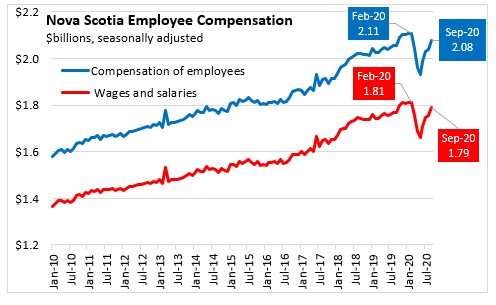
With monthly gains over the last four months, employee compensation is climbing back towards to the pre-COVID levels seen in February. As of September, employee compensation is down 1.3% compared to February 2020, with wages and salaries down 1.2% and employer’s social contributions down 1.6%.
Compared to September 2019, employee compensation increased 1.2%, with wages and salaries up 1.0% and employer’s social contributions up 2.1%.
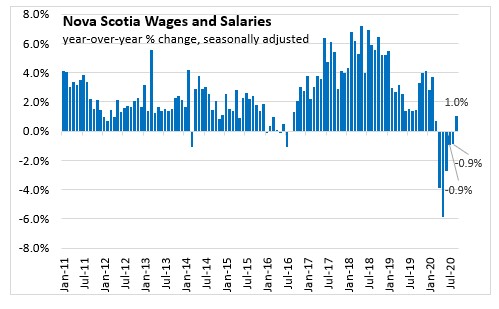
In the third quarter of 2020, Canada’s employee compensation was up 7.9% from the previous quarter with all provinces registering gains. Quebec (+11.5%), Ontario (+8.3%) and New Brunswick (+6.7%) reported the largest increases in the third quarter. Nova Scotia (+4.6%) recorded the second smallest percentage gain just behind Manitoba (+3.8%) in Q3 2020.
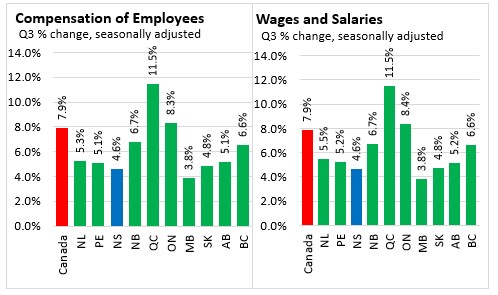
Canada's employee compensation in the first 9 months of 2020 declined 2.0% compared to the same period in 2019. The largest percentage declines were reported in Alberta (-5.8%) and Newfoundland and Labrador (-5.2%). The two provinces that reported year-to-date gains were Prince Edward Island (+1.4%) and Quebec (+0.2%).
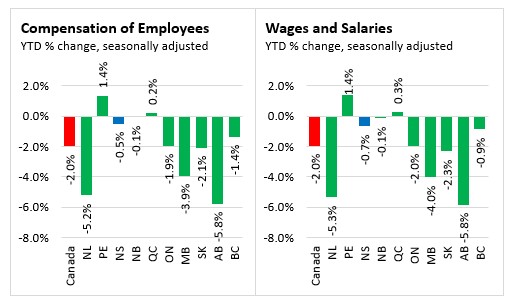
With gradual reopening of economies in May, employee compensation started showing signs of recovery in June 2020. Compared with May 2020, employee compensation was up 3.1% nationally, with the largest gains in Quebec (+5.4%) and New Brunswick (+4.9%). The smallest percentage gain was in Manitoba (+0.6%).
Employee compensation continued its upward trend in July in all provinces. Nationally, employee compensation increased 4.1% in July with Quebec (+5.6%) leading the way. The smallest percentage gain was recorded in Saskatchewan (+0.1%).
The pace of growth somewhat slowed in August with all provinces registering gains except for Prince Edward Island. Employee compensation increased 1.7% nationally with Saskatchewan (+5.3%) and Alberta (+2.5%) posting the largest percentage gains in August. Employee compensation declined in Prince Edward Island (-0.3%).
In September, all provinces saw month-over-month growth in compensation with the national total increasing 2.1%. The largest percentage gains were recorded in Prince Edward Island (+3.6%) and New Brunswick (+3.3%).

Comparing the seasonally unadjusted data for Q3 2020 with the same quarter in 2019, total wages and salaries declined 0.3% in Nova Scotia. The largest percentage declines were reported in agriculture, forestry and fishing (-9.1%), manufacturing (-5.6%), and wholesale and retail (-4.2%). Mining, oil and gas extraction (+9.1%) followed by transportation and storage (+7.3%) and finance and real estate (+4.7%) has the strongest percentage growth compared to Q3 2019.
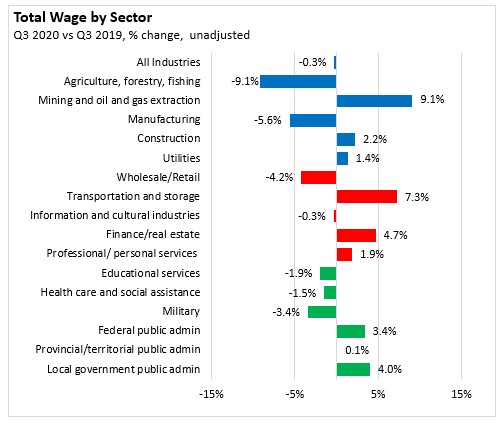
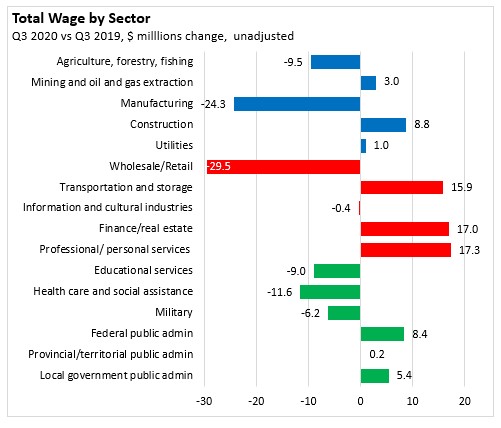
Total wages and salaries in Nova Scotia (seasonally unadjusted) declined 0.8% during the first nine months of 2020 when compeared to the same period last year. The largest percentage declines were reported in agriculture (-9.6%), wholesale and retail (-7.8%), manufacturing (-4.8%) and construction (-1.9%). The strongest percentage gains were in utilities (+10.1%) and information and cultural industries (+8.6%).
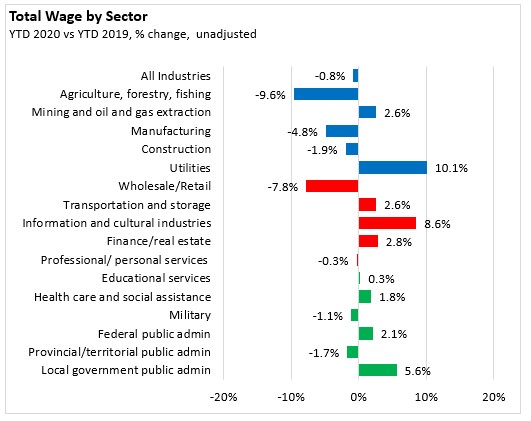
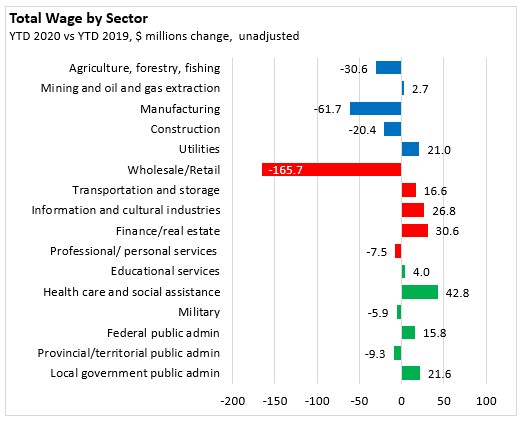
Note: comparison of wages and salaries by sector rely on data that are neither seasonally adjusted nor adjusted to reflect differences in pay periods from one year to the next.
Statistics Canada. Table 36-10-0205-01 Wages, salaries and employers' social contributions (x 1,000)